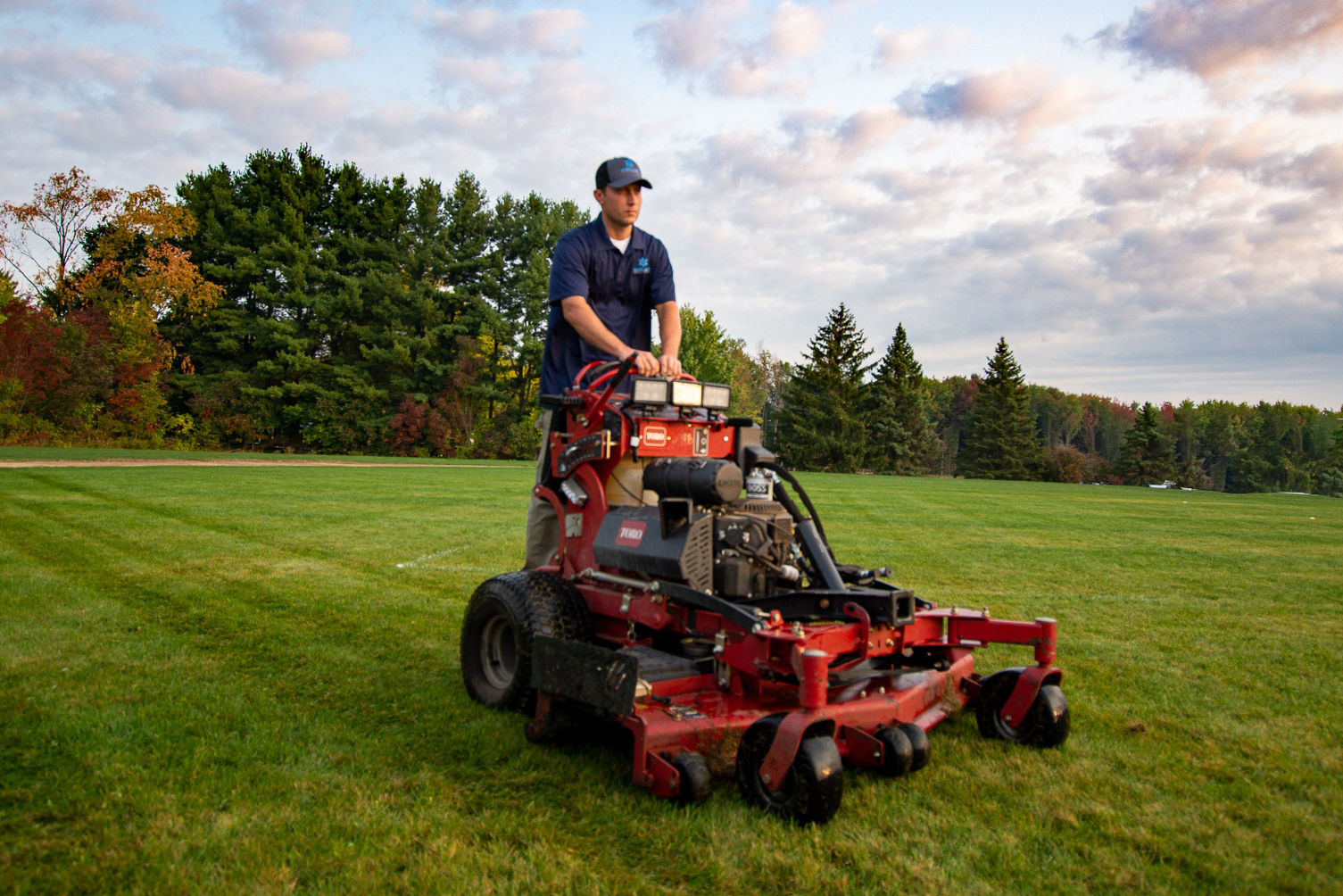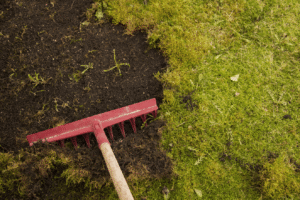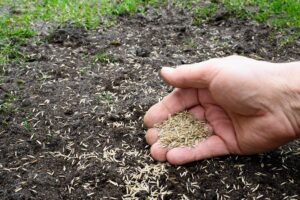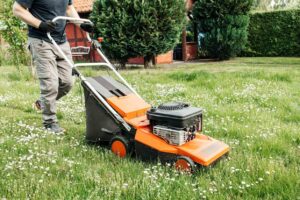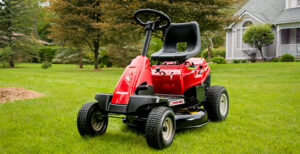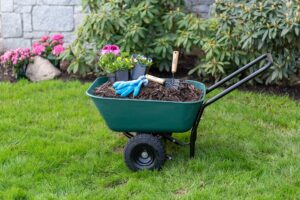A lawn seeding service helps homeowners achieve a lush, green lawn by planting grass seeds in bare or patchy areas. Whether you’re starting a new lawn or repairing an existing one, seeding is essential for promoting healthy growth and improving the overall appearance of your yard. Professional lawn seeding services ensure optimal results by using the right seed blend, preparing the soil, and providing expert care. Depending on the condition of your lawn, overseeding or slit seeding may be recommended.
A well-seeded lawn can prevent soil erosion, enhance curb appeal, and increase property value. While DIY seeding can be an option, professional services ensure better coverage, proper seed selection, and faster results. Services typically include soil testing, aeration, fertilization, and post-seeding care.
Lawn Seeding Services and Costs
| Service Name | Description | Avg. Cost |
|---|---|---|
| Basic Lawn Seeding | Spreading seeds across the lawn for even coverage. | $400 – $800 |
| Overseeding | Seeding over an existing lawn to thicken and improve grass density. | $300 – $600 |
| Slit Seeding | Cutting small grooves in the soil to plant seeds directly. | $600 – $1,000 |
| Hydroseeding | Spraying a seed mixture with mulch and water for fast growth. | $1,000 – $3,000 |
| Soil Testing & Fertilization | Testing soil for pH levels and adding necessary nutrients for growth. | $150 – $300 |
Process and Time Involved
- Initial Consultation: Professionals assess your lawn’s condition and recommend the best seeding method.
- Soil Preparation: Includes aeration, dethatching, and soil testing.
- Seeding: Depending on the method, seeds are spread evenly, slit-seeded, or hydroseeded.
- Post-Seeding Care: Fertilization and watering schedules are provided to ensure proper germination.
Typically, the entire process takes 1-2 days, with visible results in 2-4 weeks depending on the grass type and climate.
Cost of Lawn Seeding Service in Top 50 U.S. Cities
| City | Average Cost |
|---|---|
| New York, NY | $600 – $1,200 |
| Los Angeles, CA | $500 – $1,000 |
| Chicago, IL | $550 – $1,100 |
| Houston, TX | $450 – $900 |
| Phoenix, AZ | $400 – $850 |
| Philadelphia, PA | $500 – $1,000 |
| San Antonio, TX | $450 – $900 |
| San Diego, CA | $500 – $1,100 |
| Dallas, TX | $450 – $900 |
| San Jose, CA | $500 – $1,100 |
| Austin, TX | $450 – $900 |
| Jacksonville, FL | $400 – $850 |
| Fort Worth, TX | $450 – $900 |
| Columbus, OH | $400 – $850 |
| Charlotte, NC | $450 – $900 |
| San Francisco, CA | $600 – $1,200 |
| Indianapolis, IN | $400 – $850 |
| Seattle, WA | $500 – $1,100 |
| Denver, CO | $500 – $1,000 |
| Washington, DC | $600 – $1,200 |
| Boston, MA | $600 – $1,200 |
| El Paso, TX | $400 – $850 |
| Nashville, TN | $450 – $900 |
| Detroit, MI | $400 – $850 |
| Oklahoma City, OK | $400 – $850 |
| Portland, OR | $500 – $1,100 |
| Las Vegas, NV | $450 – $900 |
| Memphis, TN | $400 – $850 |
| Louisville, KY | $400 – $850 |
| Baltimore, MD | $500 – $1,000 |
| Milwaukee, WI | $450 – $900 |
| Albuquerque, NM | $400 – $850 |
| Tucson, AZ | $400 – $850 |
| Fresno, CA | $450 – $900 |
| Sacramento, CA | $500 – $1,100 |
| Kansas City, MO | $400 – $850 |
| Mesa, AZ | $400 – $850 |
| Atlanta, GA | $450 – $900 |
| Omaha, NE | $400 – $850 |
| Colorado Springs, CO | $450 – $900 |
| Raleigh, NC | $450 – $900 |
| Miami, FL | $500 – $1,000 |
| Long Beach, CA | $500 – $1,100 |
| Virginia Beach, VA | $450 – $900 |
| Oakland, CA | $500 – $1,100 |
| Minneapolis, MN | $500 – $1,000 |
| Tulsa, OK | $400 – $850 |
| Arlington, TX | $450 – $900 |
| New Orleans, LA | $450 – $900 |
What Equipment for Lawn Seeding Services?
Here’s a detailed overview of the essential equipment needed for a successful lawn seeding process, including the purpose of each tool and its role in ensuring optimal grass growth:
1. Seed Spreader
- Purpose: To evenly distribute grass seeds across the lawn, ensuring proper coverage.
- Types: There are two main types—broadcast spreaders (which spread seeds over a large area) and drop spreaders (which provide more precise control, especially for smaller lawns).
- Importance: Even seed distribution is key to preventing patchy growth and ensuring a thick, healthy lawn. A spreader makes it easier to cover large areas uniformly.
2. Aerator
- Purpose: To perforate the soil with small holes, allowing water, nutrients, and air to penetrate the grassroots.
- Types: Spike aerators (which poke holes into the soil) and plug/core aerators (which remove small plugs of soil).
- Importance: Aerating the soil helps relieve compaction, improves seed-to-soil contact, and encourages healthy root growth. Aeration is especially useful before overseeding or when dealing with compacted soil.
3. Dethatcher
- Purpose: To remove the layer of thatch (dead grass, roots, and debris) that accumulates between the soil and the grass blades.
- Types: Manual dethatchers (rake-like tools) or power dethatchers (machines).
- Importance: Thatch can block seeds from reaching the soil. Removing it before seeding ensures seeds can make direct contact with the soil, leading to better germination.
4. Slit Seeder
- Purpose: A machine that cuts small grooves or slits in the soil and deposits seeds directly into them.
- How It Works: The machine slices through the soil, which helps place seeds at the optimal depth for germination.
- Importance: Slit seeding is particularly effective for overseeding existing lawns or areas with tough soil. It ensures that seeds are well-placed into the soil, leading to higher germination rates and faster lawn establishment.
5. Lawn Roller
- Purpose: To press the seeds firmly into the soil after they are spread, ensuring good seed-to-soil contact.
- Types: Water-filled rollers or solid rollers.
- Importance: After seeding, lightly rolling the soil ensures that seeds remain in place and aren’t blown away by wind or washed away by rain. This improves the likelihood of germination.
6. Rake
- Purpose: To spread seeds evenly and cover them lightly with soil for better protection and germination.
- Types: A leaf rake or bow rake can be used.
- Importance: Raking helps to lightly cover the seeds with soil, which protects them from birds and other animals while also improving their contact with the soil. It’s especially useful when manually seeding small patches.
7. Irrigation System
- Purpose: To water the newly seeded lawn consistently to encourage germination and establish the new grass.
- Types: Sprinklers or drip irrigation systems.
- Importance: Newly seeded lawns need consistent moisture to germinate properly. An efficient irrigation system ensures that the lawn is watered evenly and frequently, preventing seeds from drying out.
8. Topsoil or Compost (Optional)
- Purpose: To improve the soil quality and provide a nutrient-rich environment for seeds to germinate.
- Usage: A thin layer of topsoil or compost can be spread over the seeds to enhance germination and improve soil structure.
- Importance: This is especially beneficial for lawns with poor soil quality, as it helps retain moisture and provides essential nutrients for new grass growth.
9. Hose or Watering Can
- Purpose: To provide manual watering, especially in small areas or patches.
- Importance: For small seeding jobs or areas without irrigation systems, a hose or watering can be used to ensure seeds receive adequate water for germination.
10. Fertilizer Spreader (Optional)
- Purpose: To evenly distribute fertilizer over the lawn before or after seeding.
- Importance: Fertilization provides the nutrients seeds need to germinate and grow. Using a fertilizer spreader ensures even coverage and prevents over-fertilization.
11. Mulch (Optional)
- Purpose: To retain moisture and protect seeds from erosion and pests.
- Types: Straw, hay, or specialized seed mulch.
- Importance: Mulching can prevent the soil from drying out too quickly, especially in hot or dry climates. It also provides a protective layer that helps seeds germinate more effectively.
12. Hydroseeding Equipment (For Large Areas)
- Purpose: Used for spraying a slurry of seed, water, fertilizer, and mulch over large areas for quick and even seed application.
- Importance: Hydroseeding is often used for large projects or commercial areas and provides rapid grass establishment with even coverage. It’s ideal for erosion control and slopes.
FAQ’s related to Lawn Seeding Service
1. What is lawn seeding?
Lawn seeding is the process of planting grass seeds to create or repair a lawn. It helps improve grass density, fill in bare spots, and promote a lush, green appearance. Different methods, like overseeding or slit seeding, are used based on the lawn’s condition.
2. How often should I reseed my lawn?
Most lawns should be reseeded every 2-3 years to maintain thickness and health. Overseeding can be done annually in areas with heavy foot traffic or poor grass growth. The best time for reseeding depends on your climate and grass type, typically in spring or fall.
3. What is the best time to seed a lawn?
The best time for lawn seeding is either in early fall or spring, depending on your region. Cool-season grasses benefit from fall seeding, while warm-season grasses thrive with spring planting. Avoid extreme temperatures, as they can stress young grass seedlings.
4. How long does it take for grass seed to grow?
Grass seed typically takes 7 to 21 days to germinate, depending on the grass variety and weather conditions. Full growth and coverage might take 4 to 8 weeks. Proper watering, sunlight, and soil preparation help speed up germination and ensure healthy grass growth.
5. What is overseeding?
Overseeding is the process of planting grass seeds over an existing lawn to thicken it and improve its appearance. It helps fill in bare spots, enhance turf health, and reduce weeds. Overseeding is often done in conjunction with aeration to improve seed-to-soil contact.
6. Do I need to prepare my lawn before seeding?
Yes, lawn preparation is essential for successful seeding. Mow the grass short, remove debris, dethatch, and aerate the soil for better seed penetration. A well-prepared lawn ensures proper seed-to-soil contact, resulting in better germination and faster grass establishment.
7. How much does lawn seeding cost?
Lawn seeding costs vary based on the service type and lawn size. On average, basic seeding costs range from $400 to $800. Overseeding typically costs $300 to $600, while more advanced methods like hydroseeding can cost between $1,000 and $3,000.
8. How should I water my lawn after seeding?
Water your newly seeded lawn lightly and frequently. For the first few weeks, water daily to keep the topsoil moist. Gradually reduce frequency as the grass grows, shifting to deeper, less frequent watering sessions to encourage strong root development.
9. What is slit seeding?
Slit seeding is a method of planting grass seeds by cutting small grooves into the soil and placing seeds directly into these slits. This ensures better seed-to-soil contact, improving germination rates and leading to thicker, healthier lawns, especially in areas with poor grass growth.
10. Can I seed a lawn in the summer?
Seeding in summer is not recommended due to the high heat, which stresses young grass seedlings and increases the need for water. However, it may work with proper irrigation and care, but it’s usually best to seed in cooler seasons like spring or fall.
